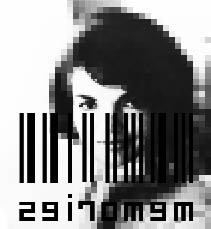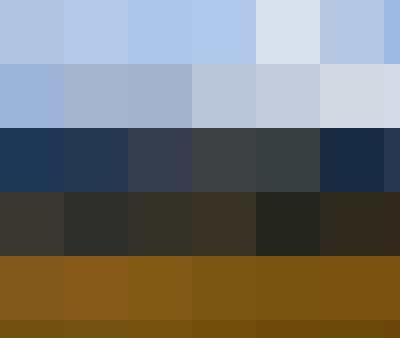In essence we are once again just tracing our roots back to Duchamp – What is Art? And building upon what he began with his readymades – half the piece is the reaction of the viewer. No work of art is complete without the viewer, and even then it could be argued that it is still not complete in the scheme of its lifetime. We’ll save thoughts on the lifetime of a work of art for later though.
Through the Fluxus movement we saw a great push for more performance based works or Happenings, these being events where the ‘viewer’ was actually the ‘participant’ helping to bring the work of art into existence. These tended to be one time events, and even if the same act should occur multiple times no one Happening was the same. This in itself brings together many interesting elements which Allan Kaprow discusses in his essay Untitled Guidelines for Happenings. Ultimately there was a shared goal of creating art in new arenas in new ways and allowing the work of art to take form through the process, this being that although the act was planned there was no telling how the participants would act and react. Kaprow points out that the best participants are often people who are not necessarily involved in the arts but are curious about it – this would ultimately enhance the randomness of the act bringing forth more fulfilling results instead of the expected. These were exciting and highly original occurrences, separate from the rigid high arts system and pushed for art in everyday life situations. That said, they never eliminated the theatrical experience or truly fulfilled the incorporation of the random action/reaction; nor make any progress past what John Cage had already been doing with music. Could the act of 4’33” in 1953 be equivalent to many of the act preformed as Happenings? Debatable, but ultimately they began a process that, from Duchamp, has extended into our modern day culture. The idea of intermedia which resulted from the Happenings and Cage’s compositions, merging mediums and attempting to create new works and performances from the result of their use in the process has very serious premises for the modern arena of art.
With the rather prophetic essay Art and Satellite, written in 1984, the video artist Nam June Paik began speaking of art that connects. Connecting from areas across the globe and through two-way connections allowing the participants to interact through the art, and he questions “how to give a conversational structure to the art?” These were extremely interesting thoughts considering what little was being done in art with computers at that time and let alone their capabilities. In the spirit of intermedia, though, the ideas of connectivity and bringing people together to enact a work of art and interact is more promising now than it ever was before. It is inspiring what the works of Cage, Paik, and the Fluxus had begun to an age thriving on connectivity, technology, and interaction. Paik states “man talks to accomplish something, unawares, he soon begins to talk simply to talk…”
In our digital age, we stress our theory and attempt to conceptualize the world we perceive, but with the ideas of Cage, the Fluxus, and Paik in mind what works have been created that fulfill what they tried to imagine? What artists have pushed past and further with the capabilities of intermedia present today? It you were to lump us into a group of ‘digital artists,’ those being artists working with digital technology on top of the preexisting mediums, I feel it would be fair to say that we are more preoccupied with the possibility of replicating traditional practices through the computer. When calling one a digital artist, what do you initially imagine of there work? They must use Photoshop, Illustrator, HTML/CSS, Maya, or work with video; you could further categorize these into digital photographers, illustrators, etc., but there is no point we are all working ultimately to create through digital means. My point is that these do not fully realize the extreme capabilities possible through computer art, and I’m not implying that we must learn programming (although it would be nice, I wish I did..). They are bound by the act of replicating the visual arts we already have – painting, drawing, printing, even sculpture to some degree through 3d animation. It is now a time to push from digital to intermedia – the capabilities of modern man extend far past what they were even 20 years ago – and yet what artists are utilizing this? To use new mediums with or without older forms to create more experimental, conceptual, thought provoking, as well as globally encompassing works…
I do believe that currently we are working to bring this into reality, and are no longer just digital illustrators and photographers, but are becoming intermedia artists. And this is not to say that the talent and imaginative capabilities of the standard array of digital applications are null and void but rather that they are of a greater arsenal to convey and properly bring works of art into the real, allowing for even greater viewer experiences. Artists such as Mark Amerika have begun fulfilling these goals, with his earlier work Grammatron he utilizes code and the digital realm of the internet. Through this piece we are brought somewhere from our own computers from our own home and interact on our own accord as we navigate through the piece. He has used the code to allow for random links causing each viewers experience to be unique, causing us to create our own experience through our decisions made within his guidelines. Artist team Skoltz_Kogen’s work has explored viewer interaction as well but in more local environments through their piece ASKAA. This brings the viewer into a large space with several large projection screens running a type of interactive ecosystem. The ecosystem reacts to the sonic impulses picked up within the area and determines the experience through the ever evolving sound/image program. Another artist/poet, Christophe Bruno, used the viewer for his online performance/happening without their knowledge as well as using Google as his medium. The Google AdWords Happening was not only a work of intermedia but also of culture jamming in an effort to interact with the viewers in an area on their own terms. Although Google ultimately shutdown his venture, he had changed the environment the viewer had entered through the appearance of his poetry where it was not ever expected. These may be minor on the scale of the art world but such works are beginning to appear more throughout and with greater significance. In the earlier part of this year the MOMA exhibited several digital works in their show Design and the Elastic Mind, the works where composed by a team at MIT and cross the line of research, art, and sociology. The work was a visualization of all the phone calls going out of New York City based on time and destination. Artist Luke DeBois is currently working on a piece involving information gathered about individuals based on their location from online dating services and networks. He jokes that through this piece we will know which cities are most compatible. These more researched based pieces begin to explore more of the human experience we think we perceive and the actual reality, blending mediums and ideas. Not to mention the advent of Flash Mobs, or group performances mobilized through text messages at random times and in random locations…
We again come back to our duchampian question, what is art? It is something which we are currently forming and must strive to truly utilize our digital capabilities taking advantage of the ever increasing arsenal within intermedia and the connectivity we share. Our traditional practices of art are nothing to throw away and declare obsolete but to build on. The age of the artist specializing within one medium has passed, although surely there will always be great and imaginative talent in painting and sculpture, but the direction of our contemporary and digital age must express itself through the best medium for the intent rather than be restricted to just one. We live now in an age where it is our turn to determine the direction economically, politically, and artistically. Works of art in the digital age must explore all possible venues, mediums, and interactions, finding the boundary of what is capable.








